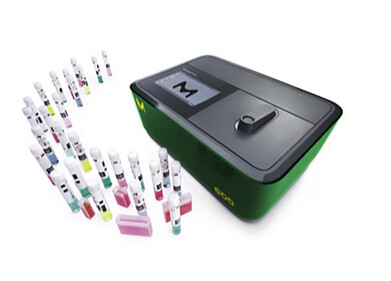Laboratory products
Instrumentation Selected for the Study of Virus and Nano Particles
Mar 31 2010
NanoSight is pleased to report that the School of Chemical Engineering at the University of Birmingham is using multiple NanoSight nanoparticle characterisation systems to study viruses and catalyst nanoparticles. Working in the group of Professor Kevin Kendall, Marie-Curie Research Fellow, Dr Shangfeng Du, said: “It’s a very good tool for us to characterise the molecular adhesion and fracture, and interaction between particles in the research areas of catalysts and the biosciences.”
Dr Du’s research concentrates on the catalyst nanoparticles for fuel cells. An important emphasis of this effort is on the synthesis of nanoparticle catalysts of Pt, Ni and base metals, especially to produce new degrees of aggregation in their structure, characterising the nanoparticles to define the new structures, compositions and processes.
For catalyst characterisation, knowing the particle size based on number is very important as it is directly link to the catalytic performance. By knowing the size distribution of the particles in suspension, information on the molecular adhesion such as the singlet, doublet, triplet and larger aggregations can be obtained. This is very useful in the understanding of the processing of dispersions.
Before finding out about NanoSight, the group mainly used electron microscopy (TEM and SEM) and dynamic light scattering (DLS) to measure particle size and aggregation. The main benefit of NanoSight’s nanoparticle tracking analysis (NTA) is that it tracks particles individually making it possible to analyse small aggregations like doublets or triplets which were not seen by DLS. Moreover, it can be used to analyse the sample using a very low concentration which is very difficult by DLS or electron microscopy techniques.
This work has already been expanded into the measurement of molecular interactions between nanoparticles and could have significant application use in a number of fields. One such area is on-line calibration of virus number concentrations which may be studied simultaneously with the interactions of viruses with polymer surfaces.
Digital Edition
Lab Asia 31.6 Dec 2024
December 2024
Chromatography Articles - Sustainable chromatography: Embracing software for greener methods Mass Spectrometry & Spectroscopy Articles - Solving industry challenges for phosphorus containi...
View all digital editions
Events
Jan 22 2025 Tokyo, Japan
Jan 22 2025 Birmingham, UK
Jan 25 2025 San Diego, CA, USA
Jan 27 2025 Dubai, UAE
Jan 29 2025 Tokyo, Japan



















